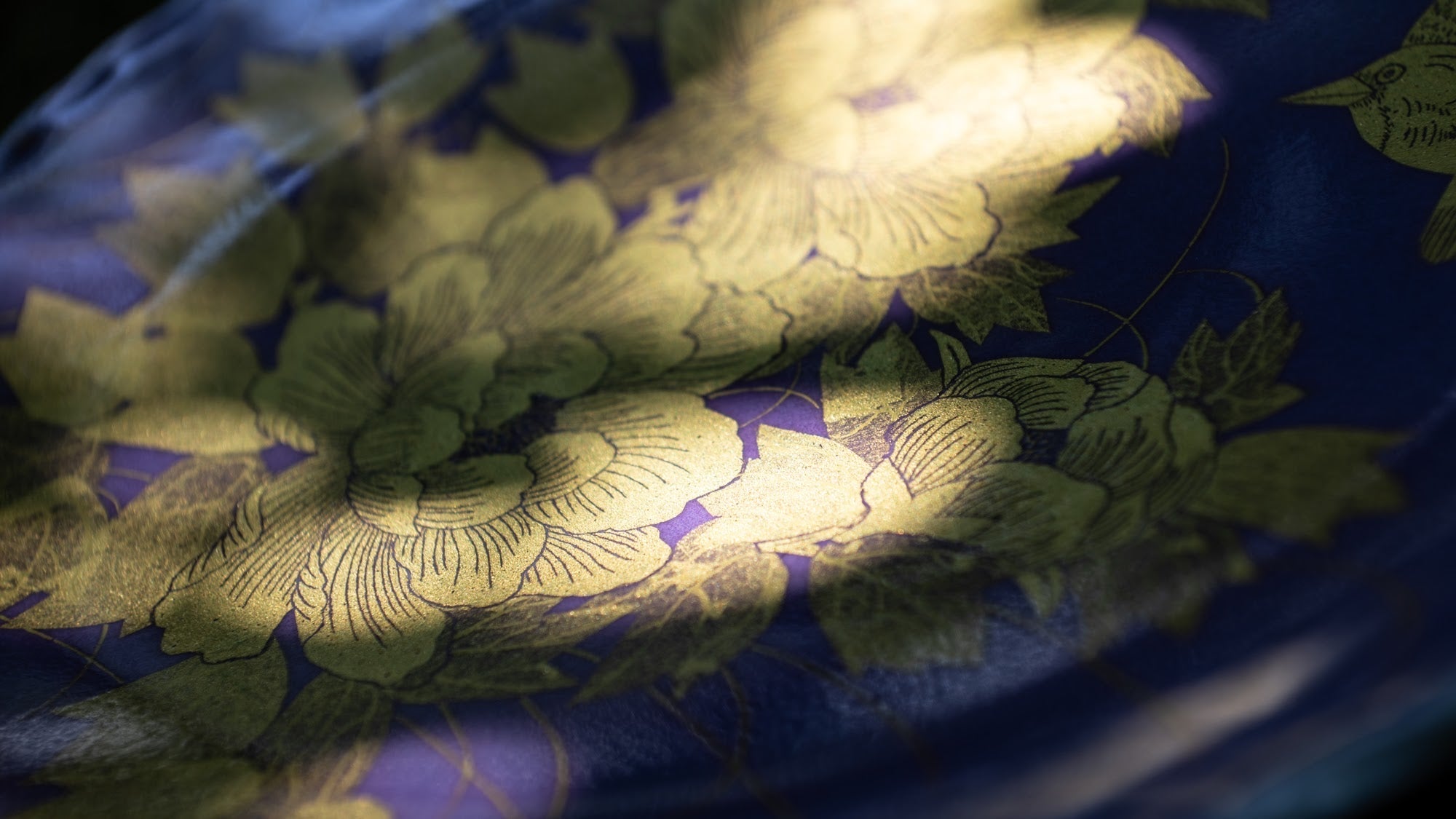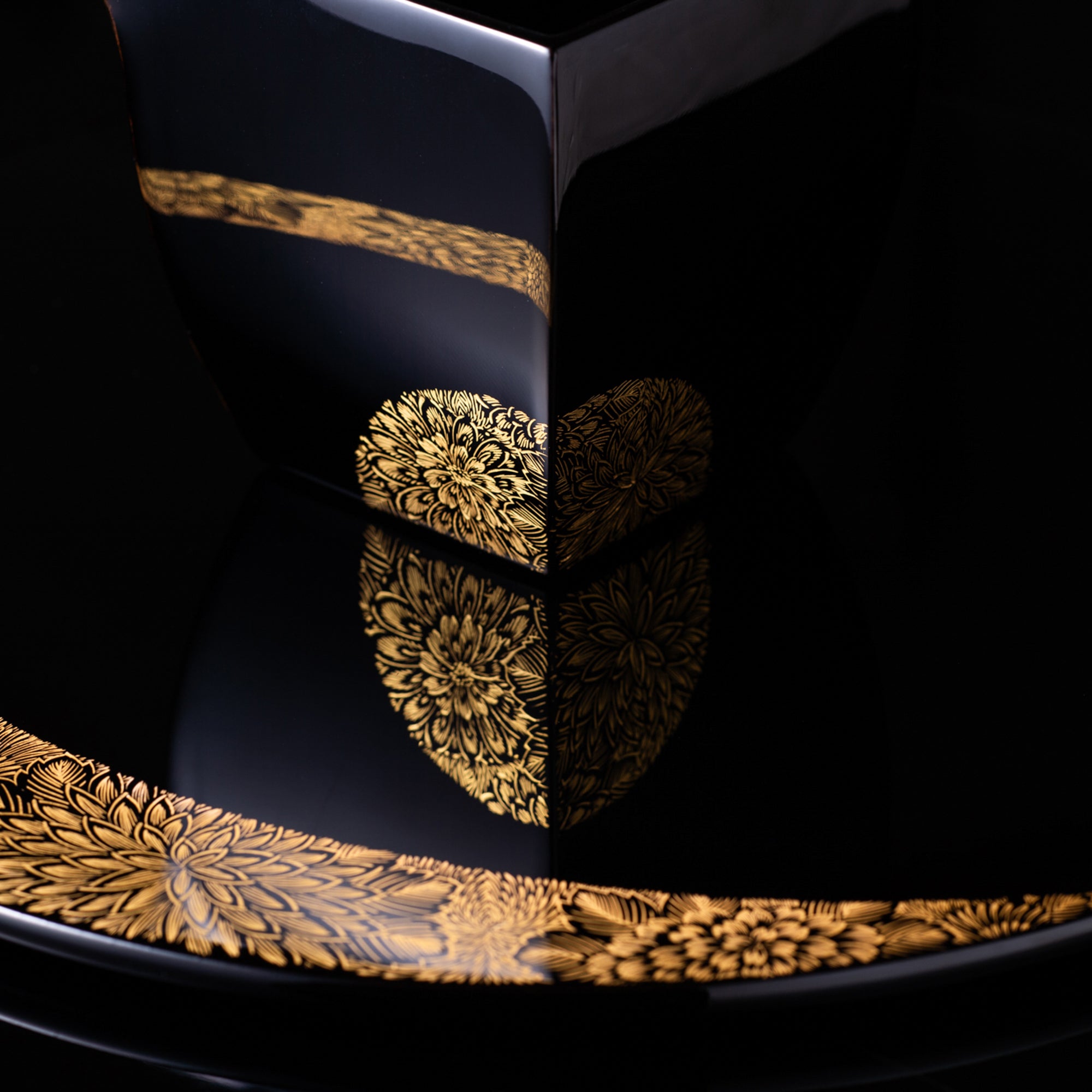
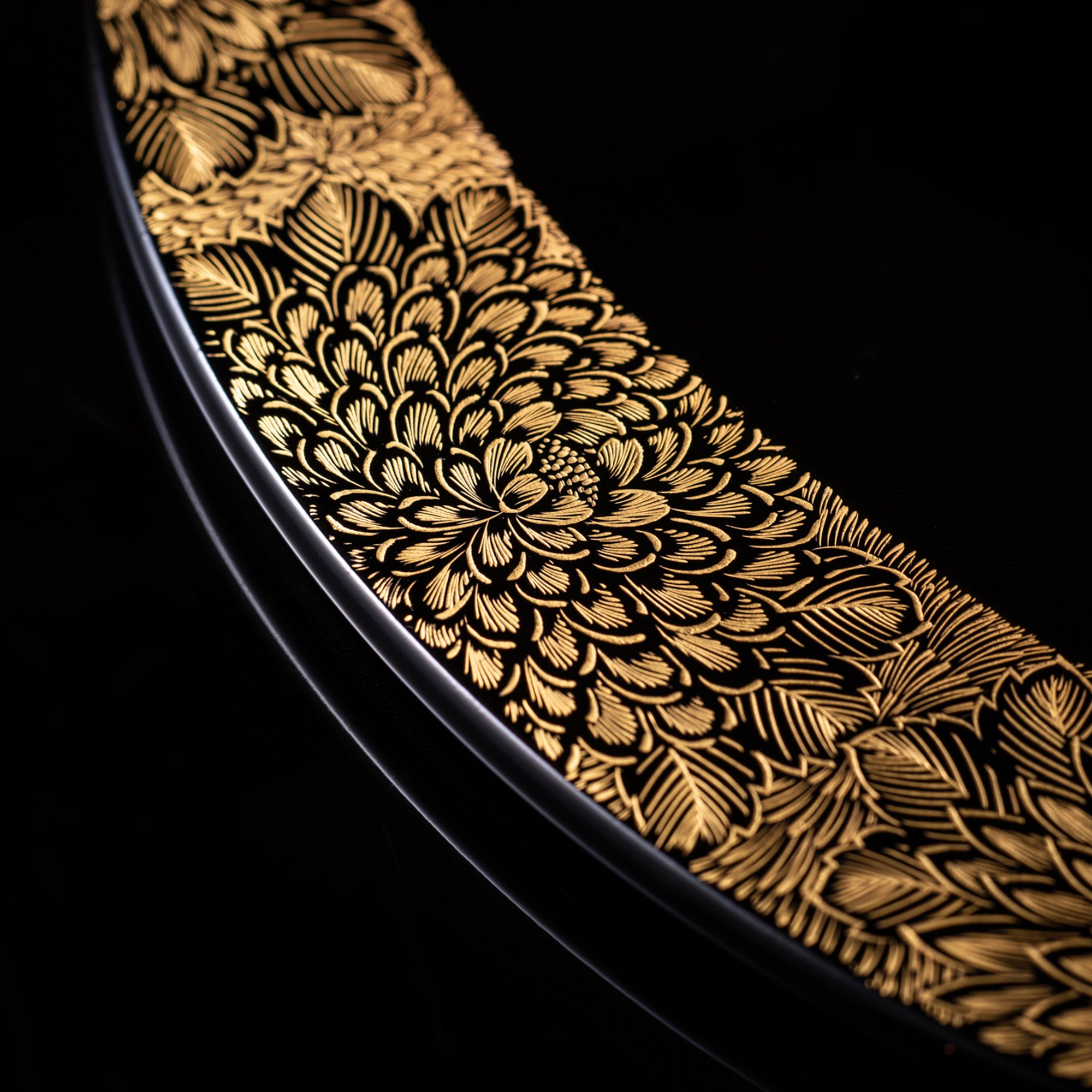
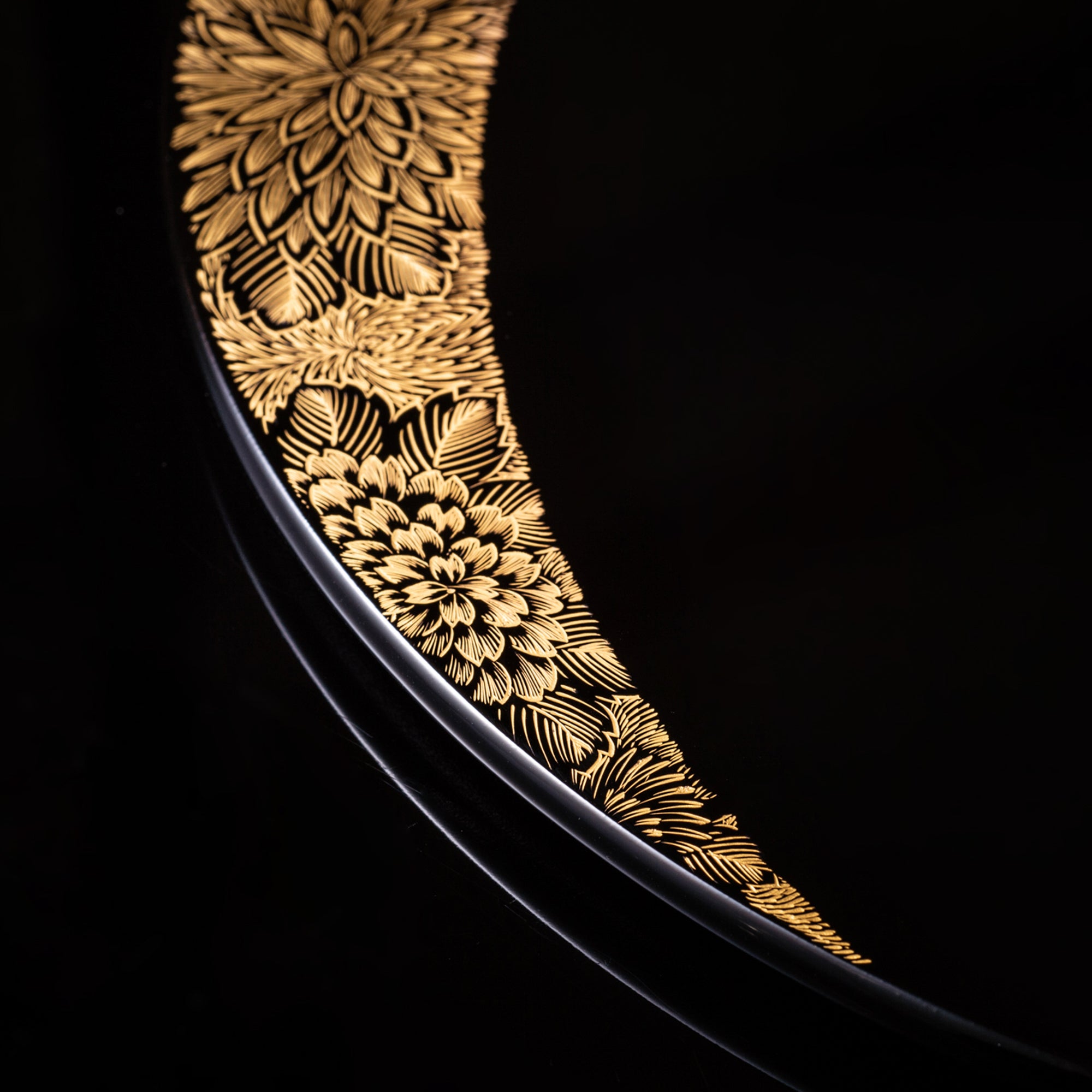
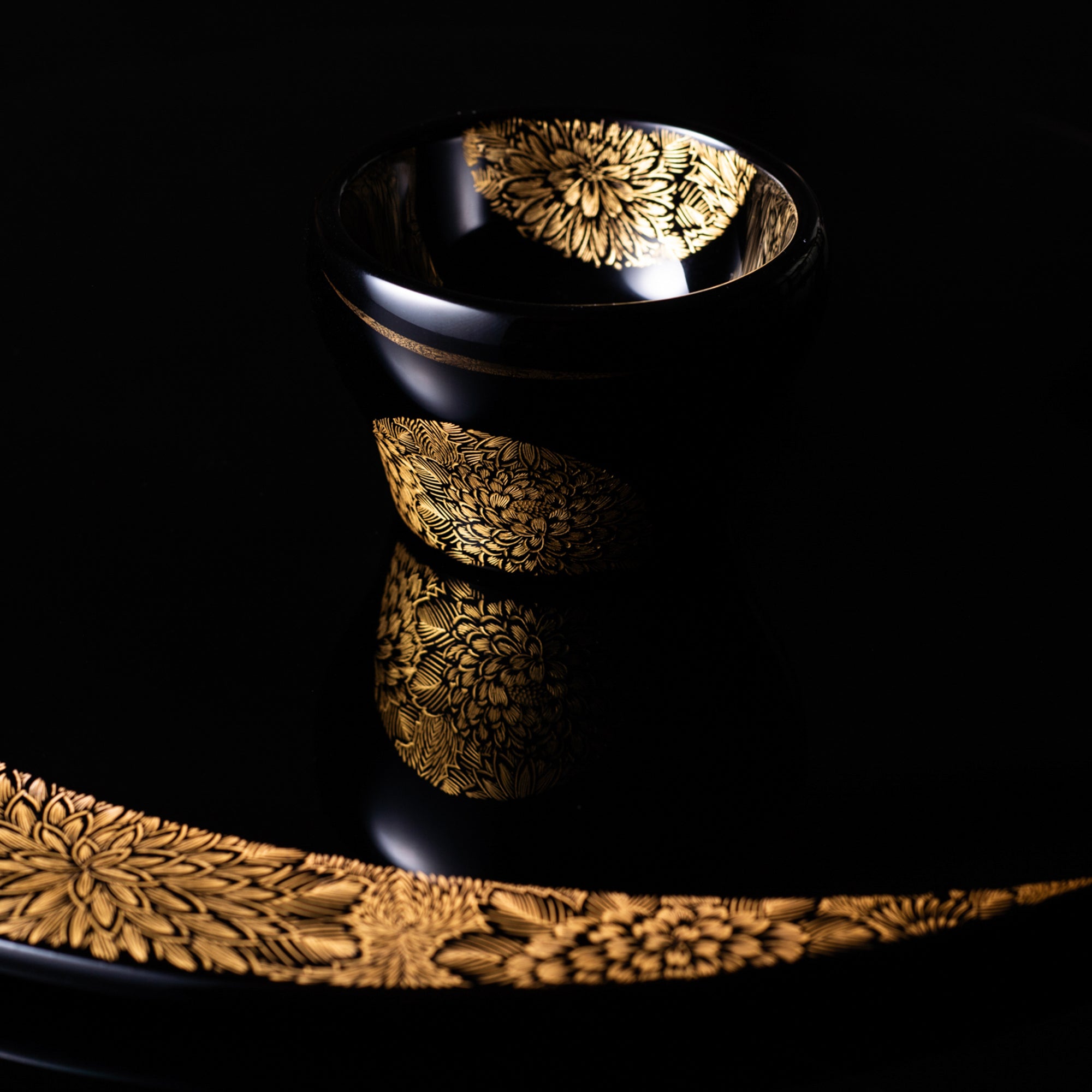
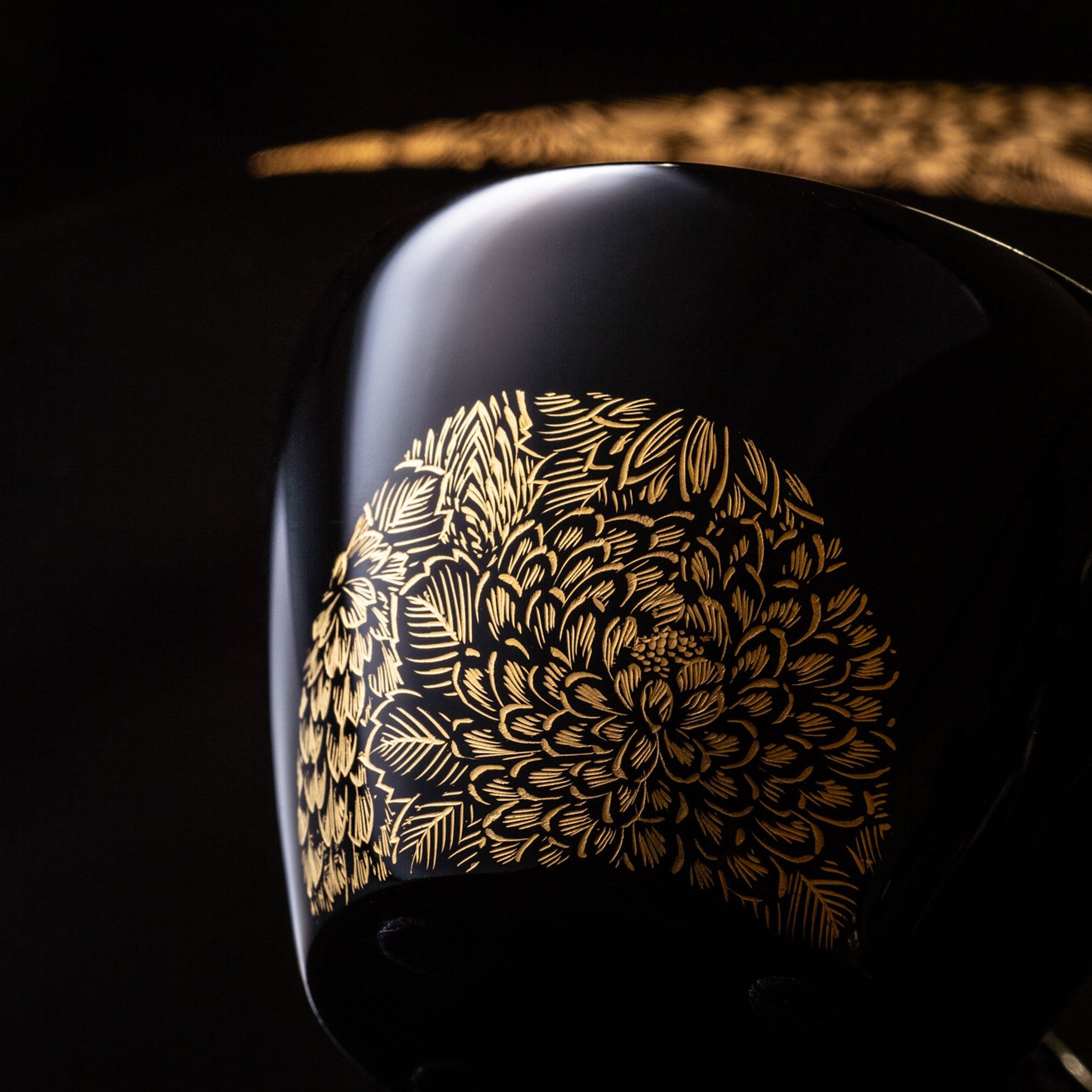
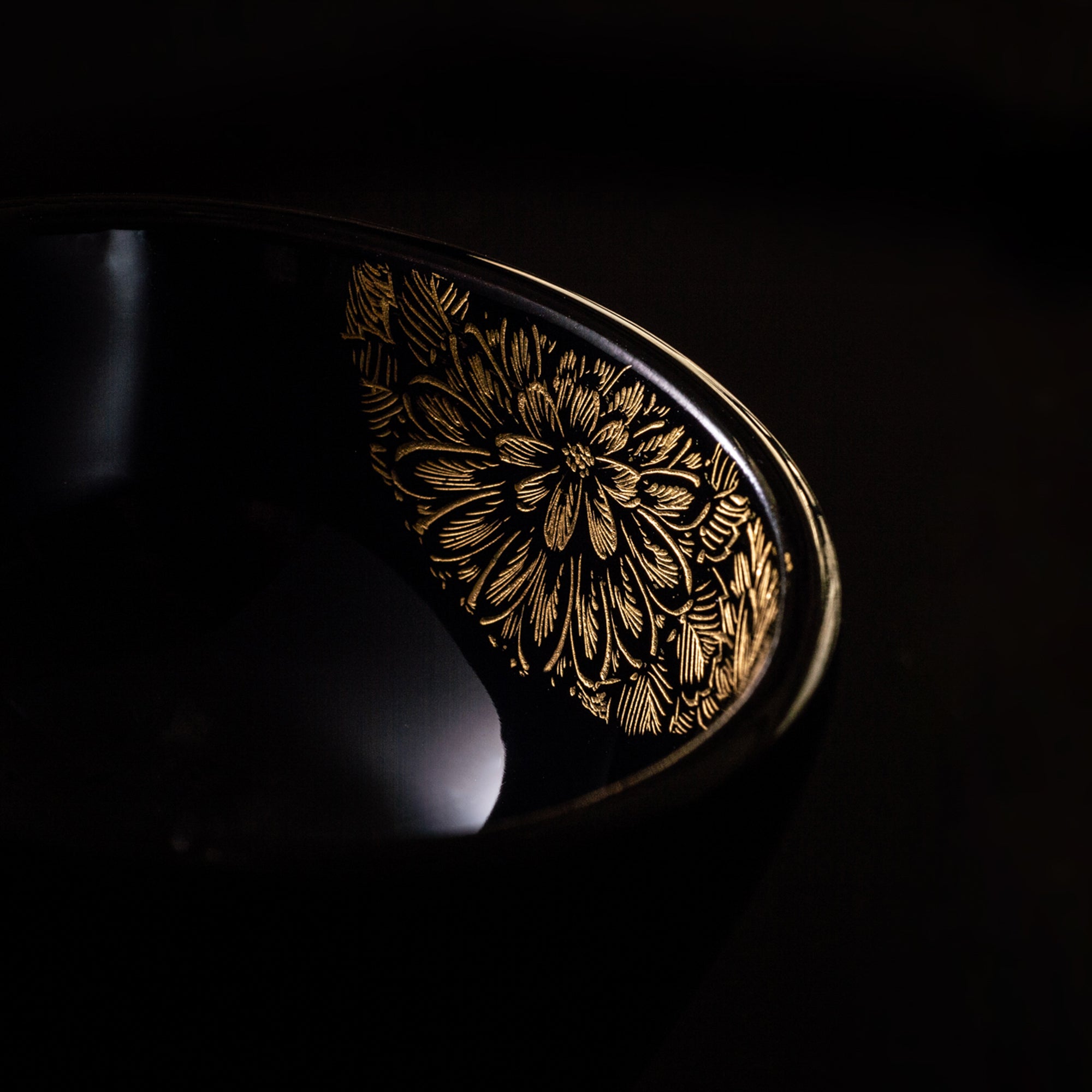
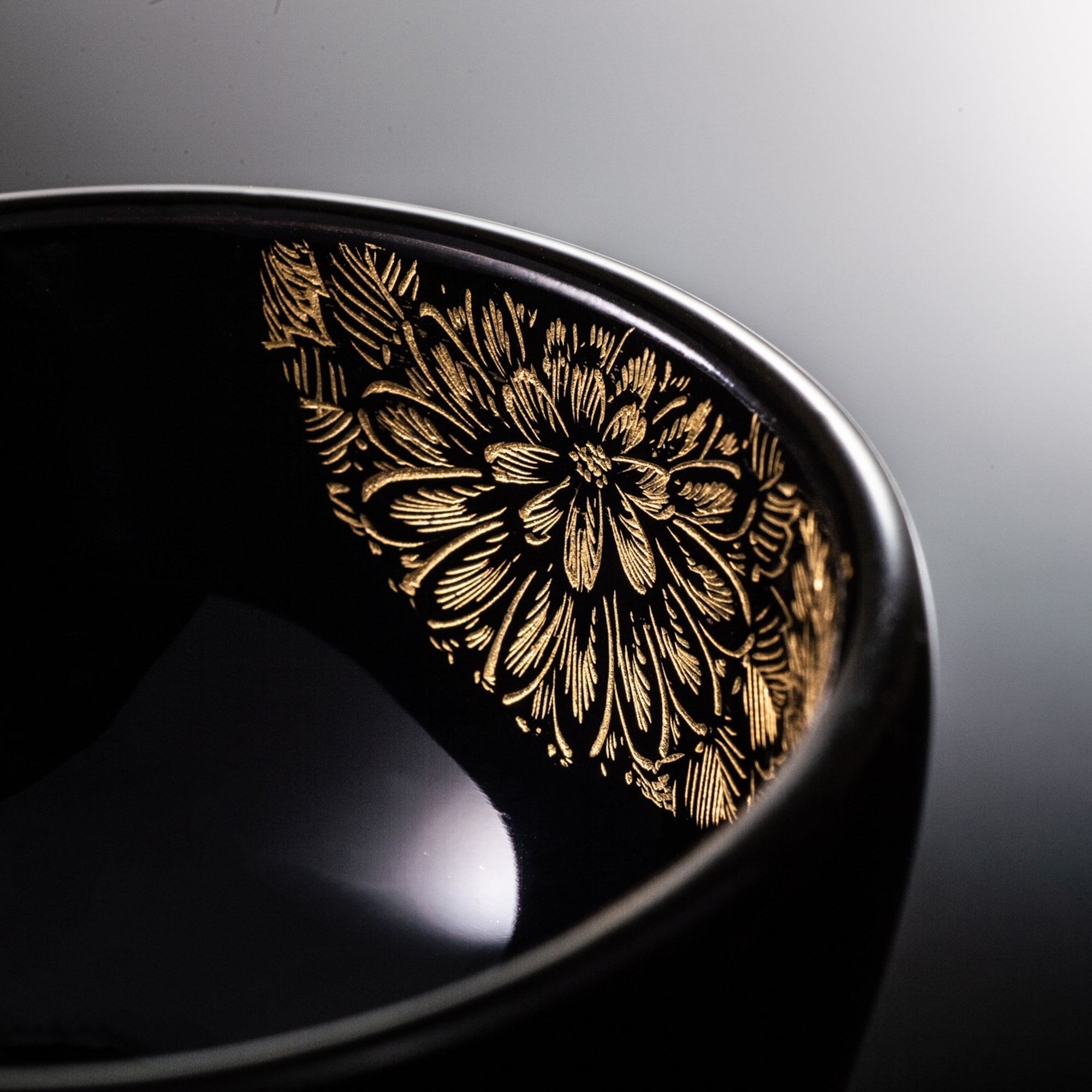
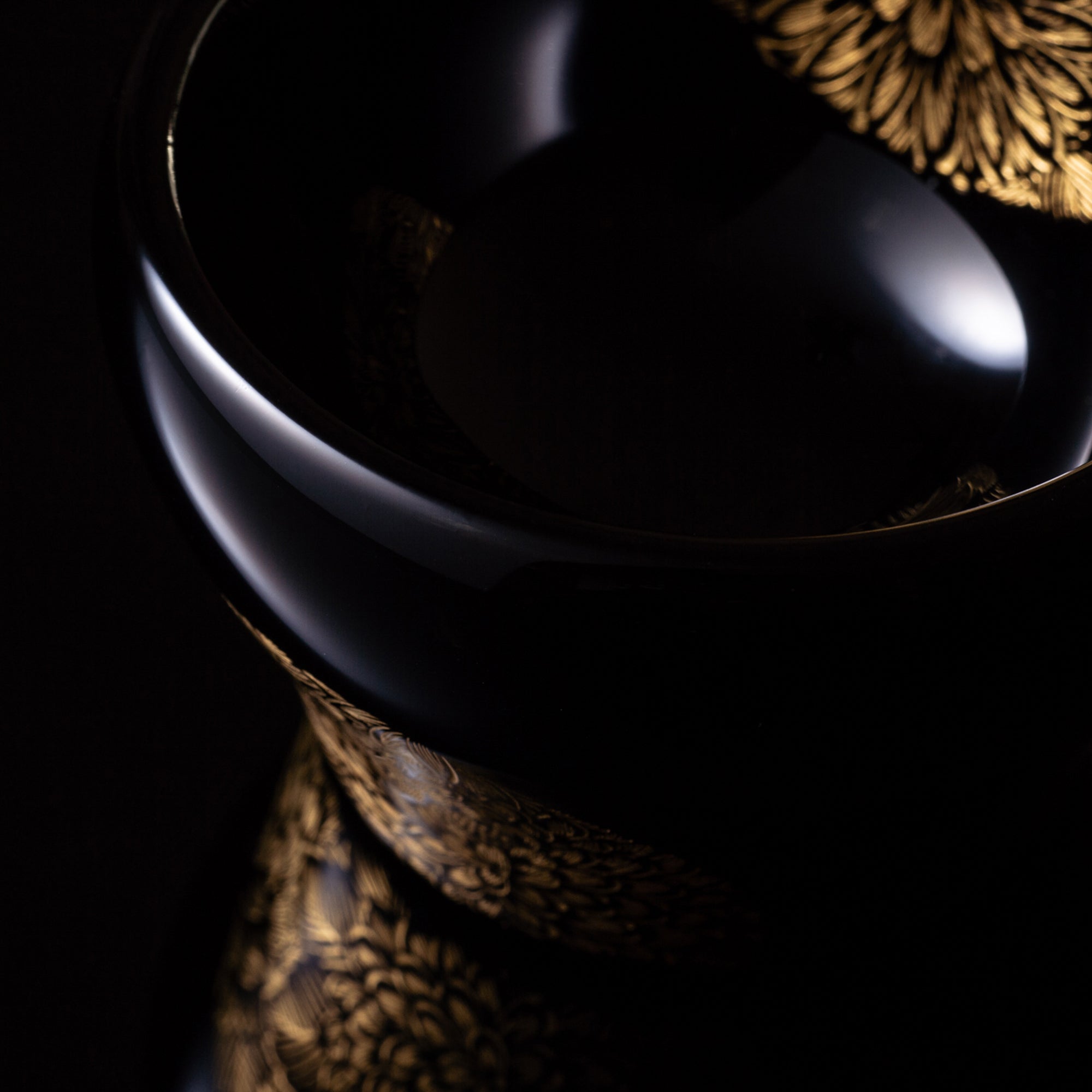

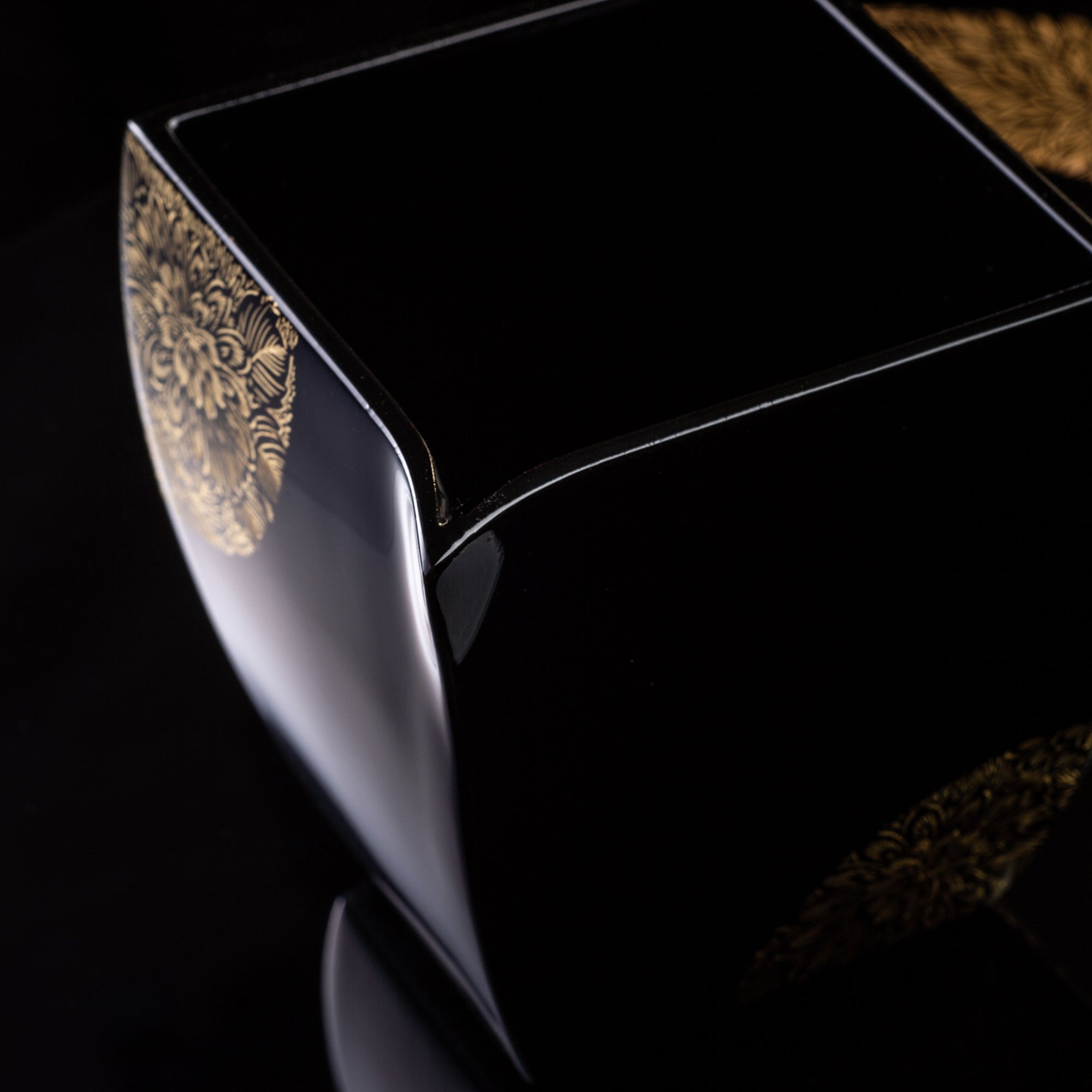
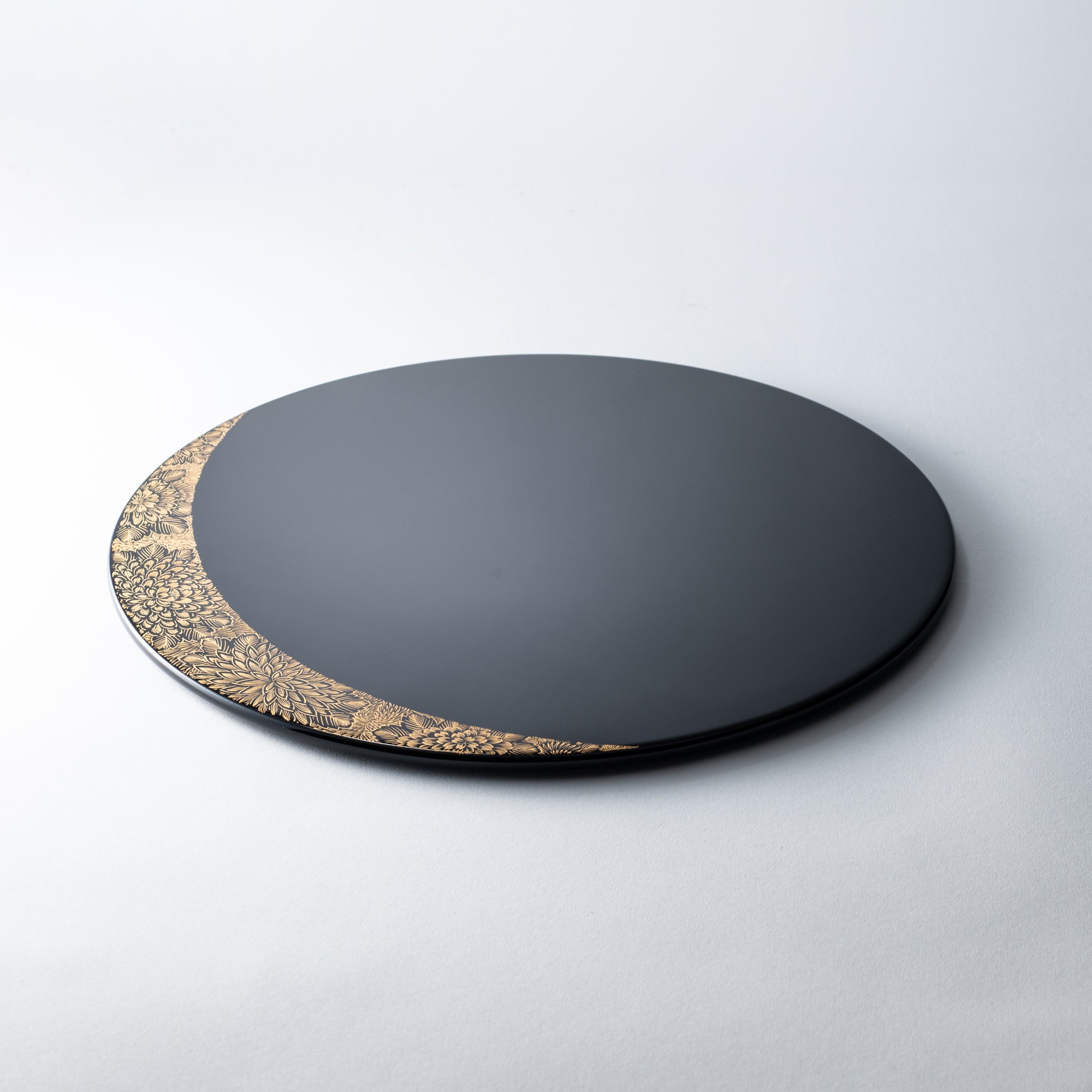
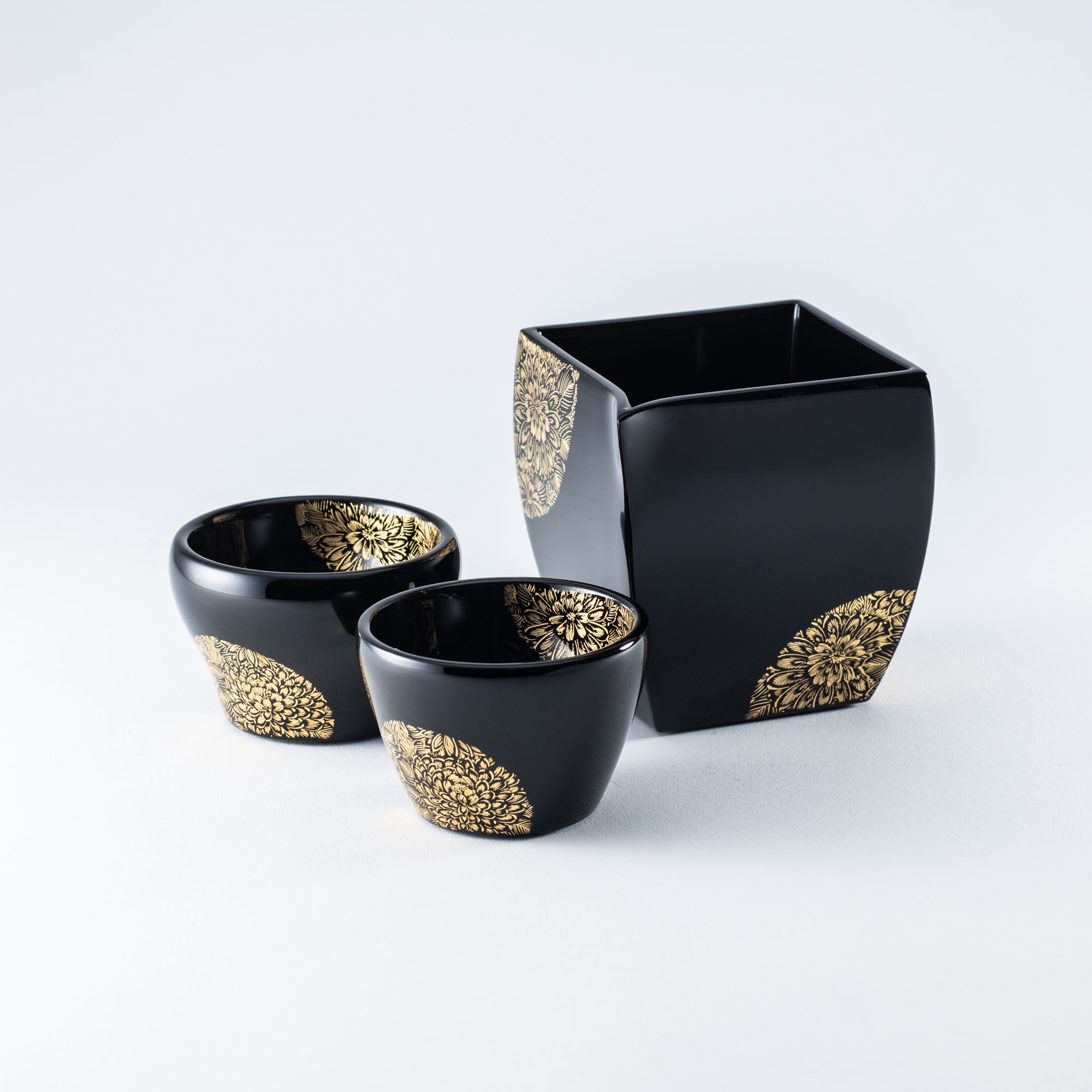
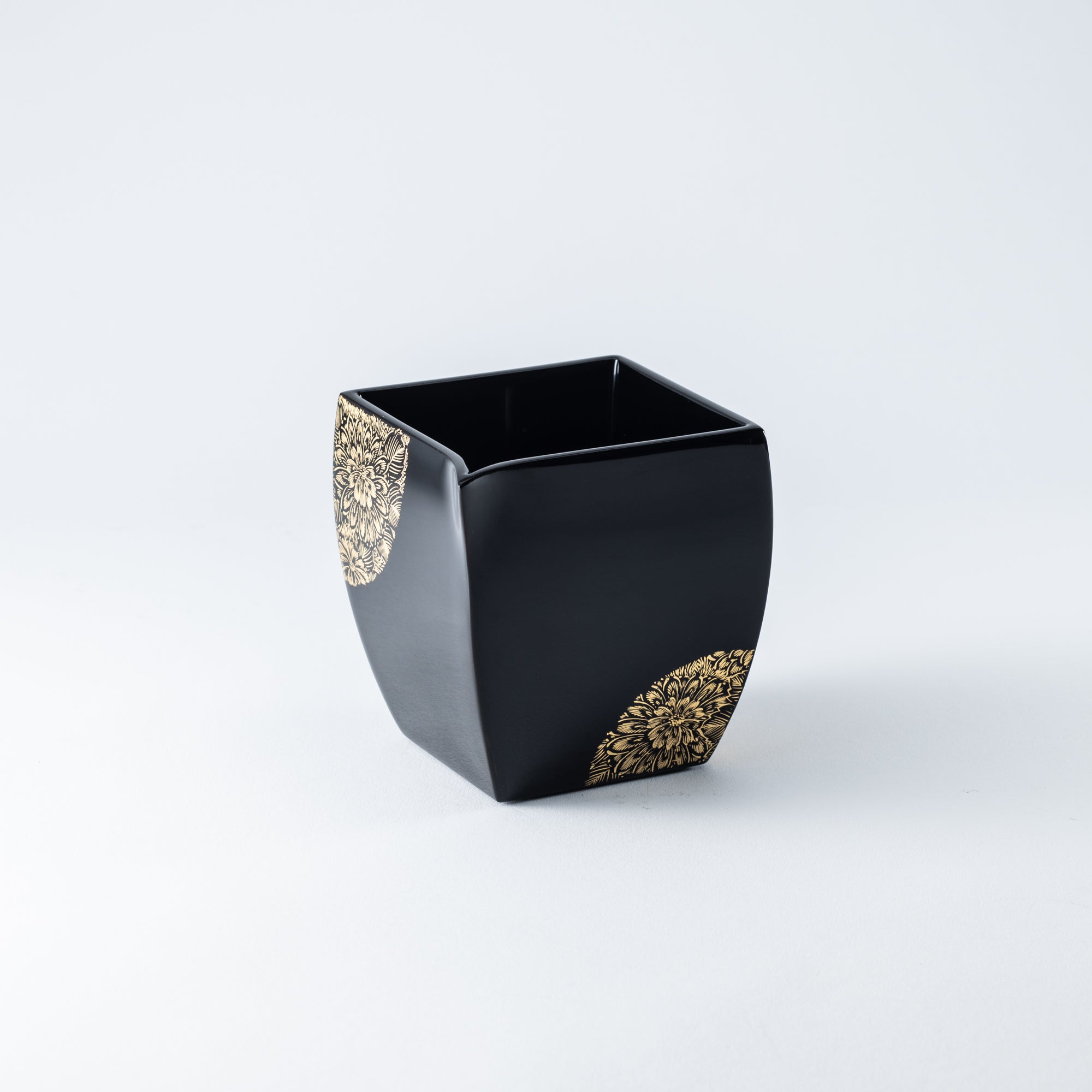
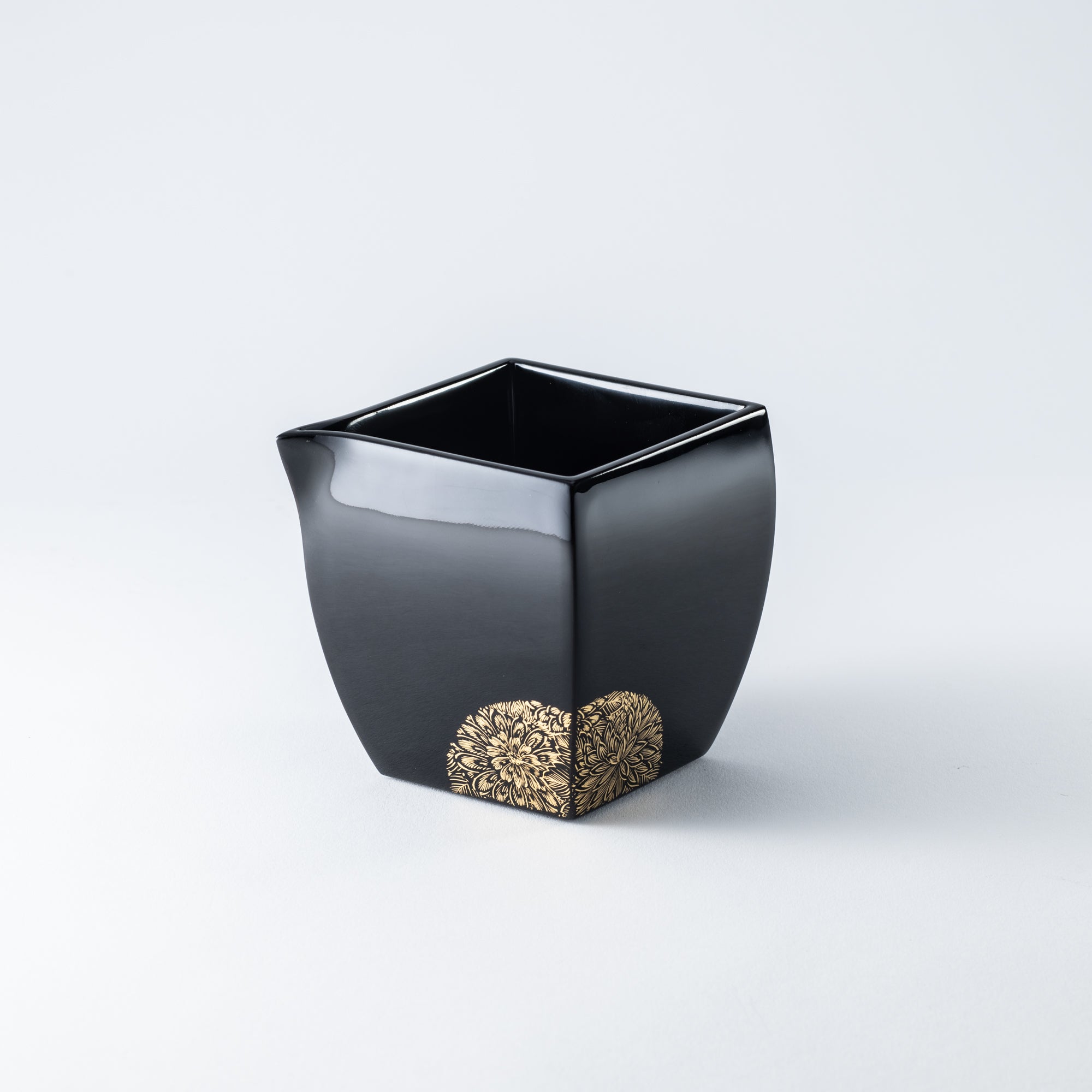
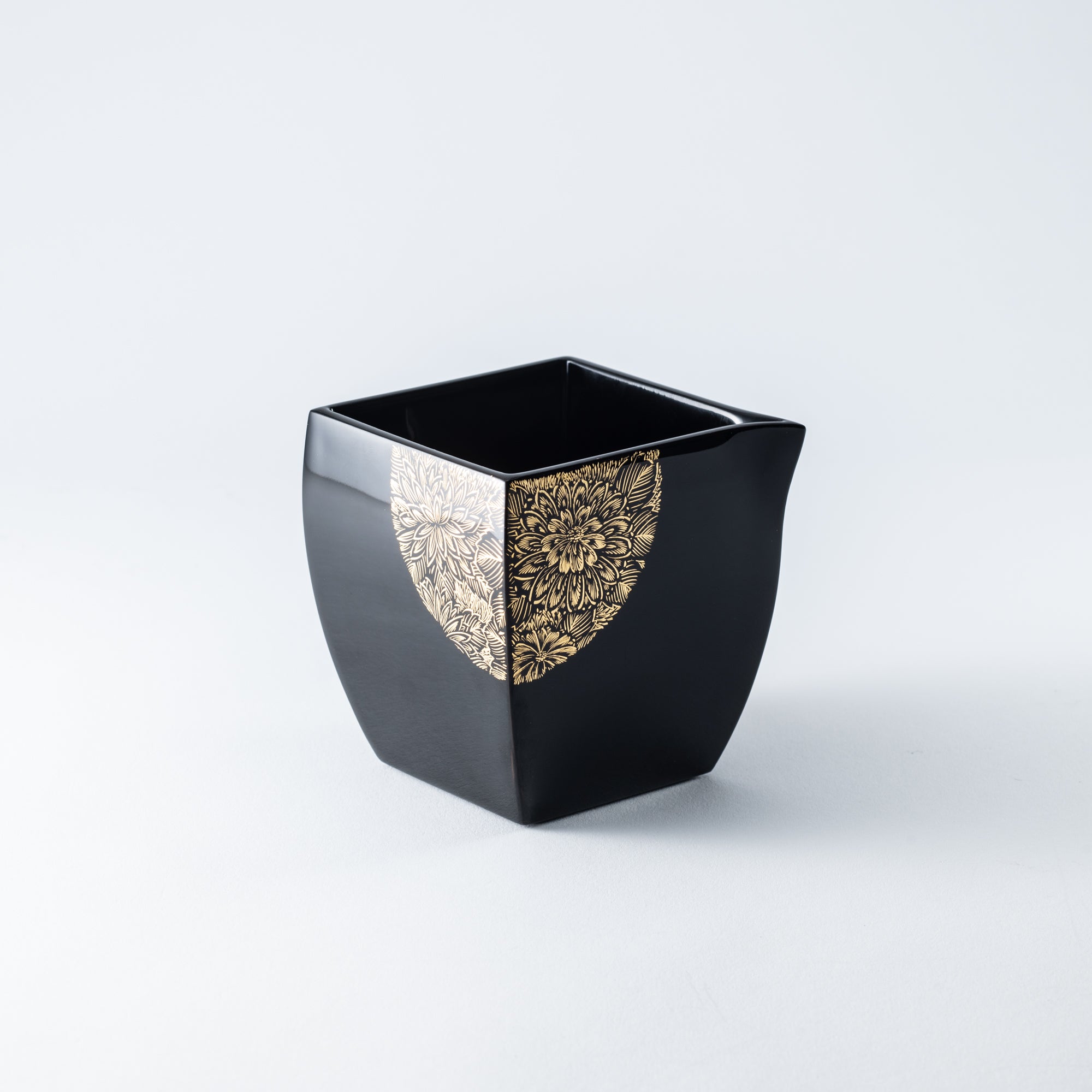
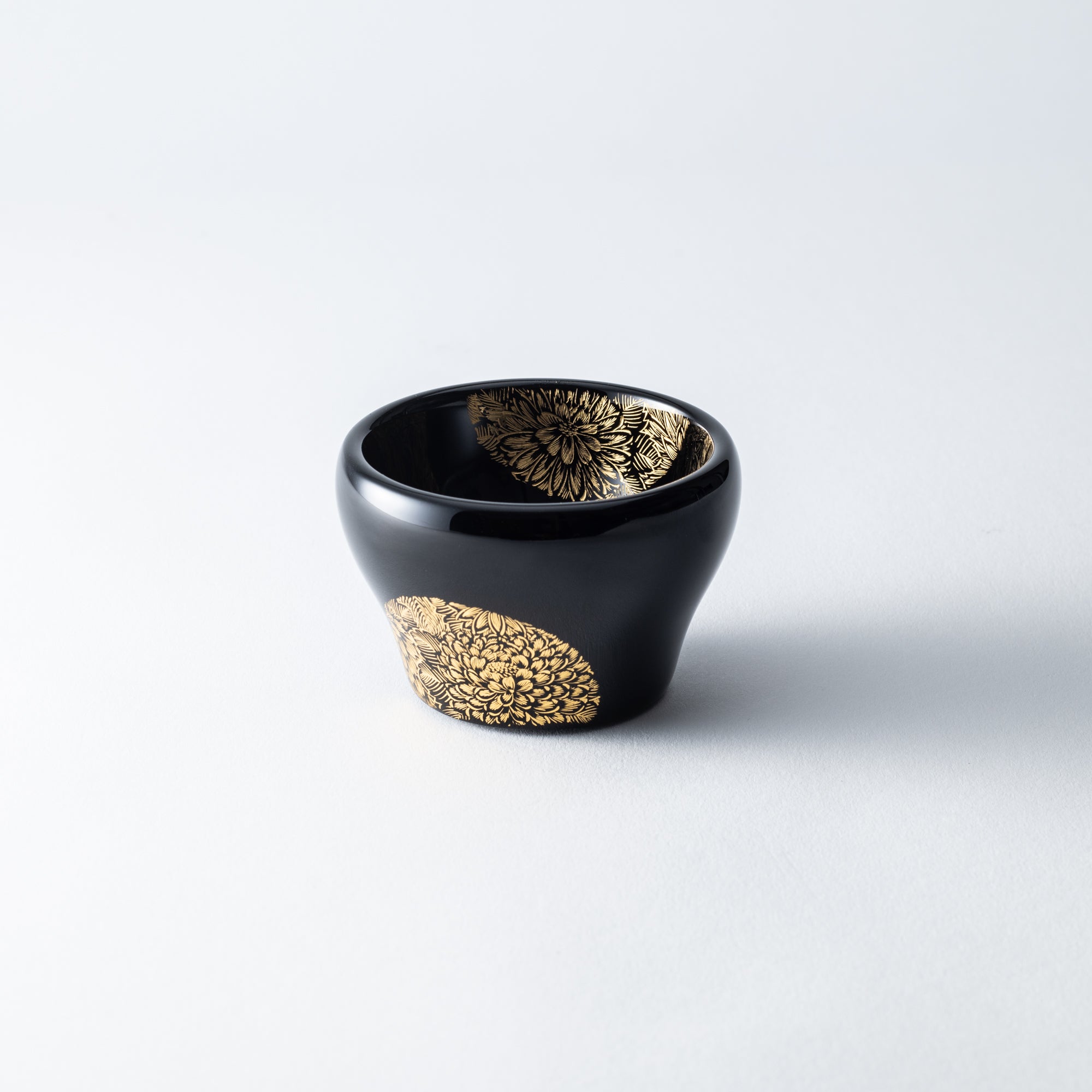
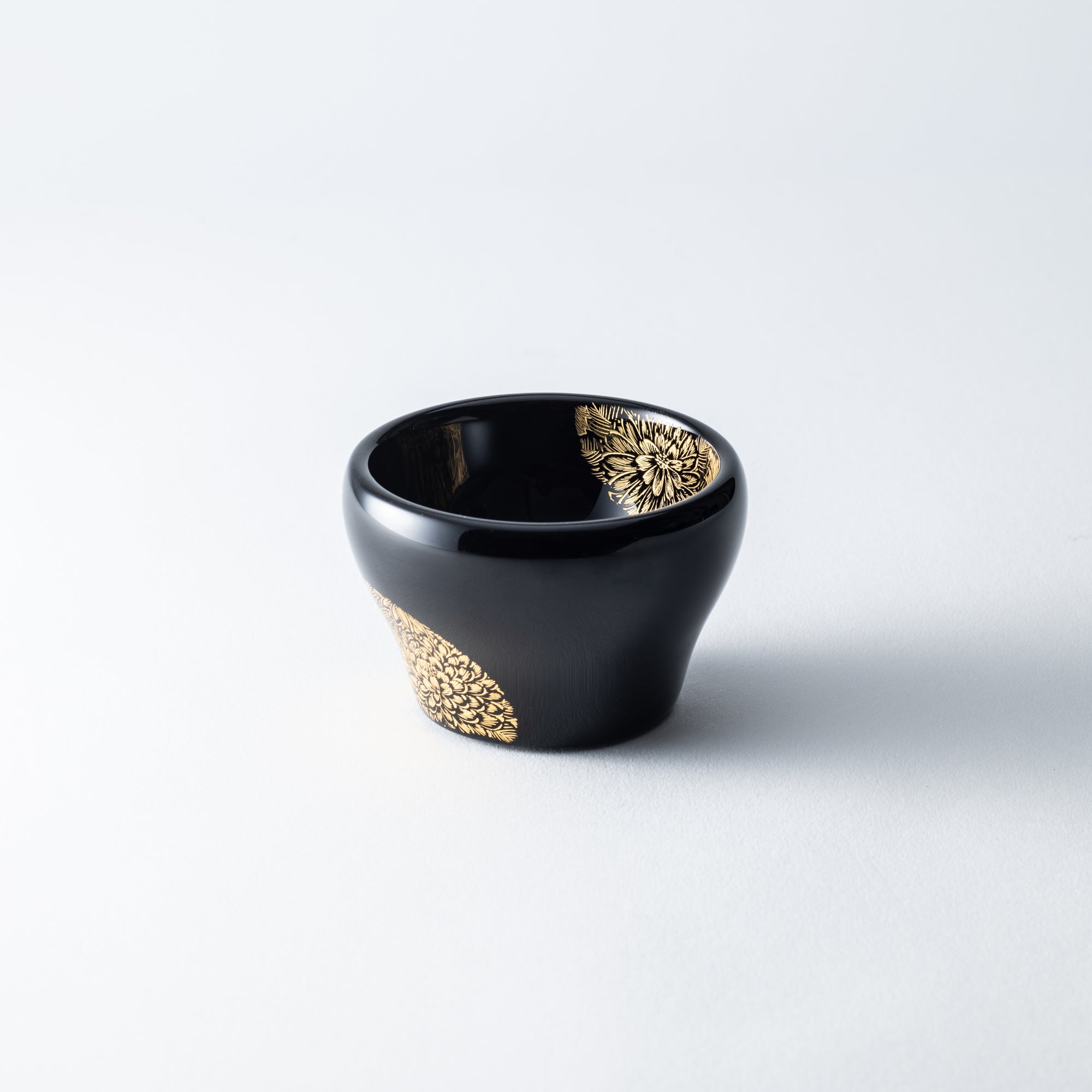
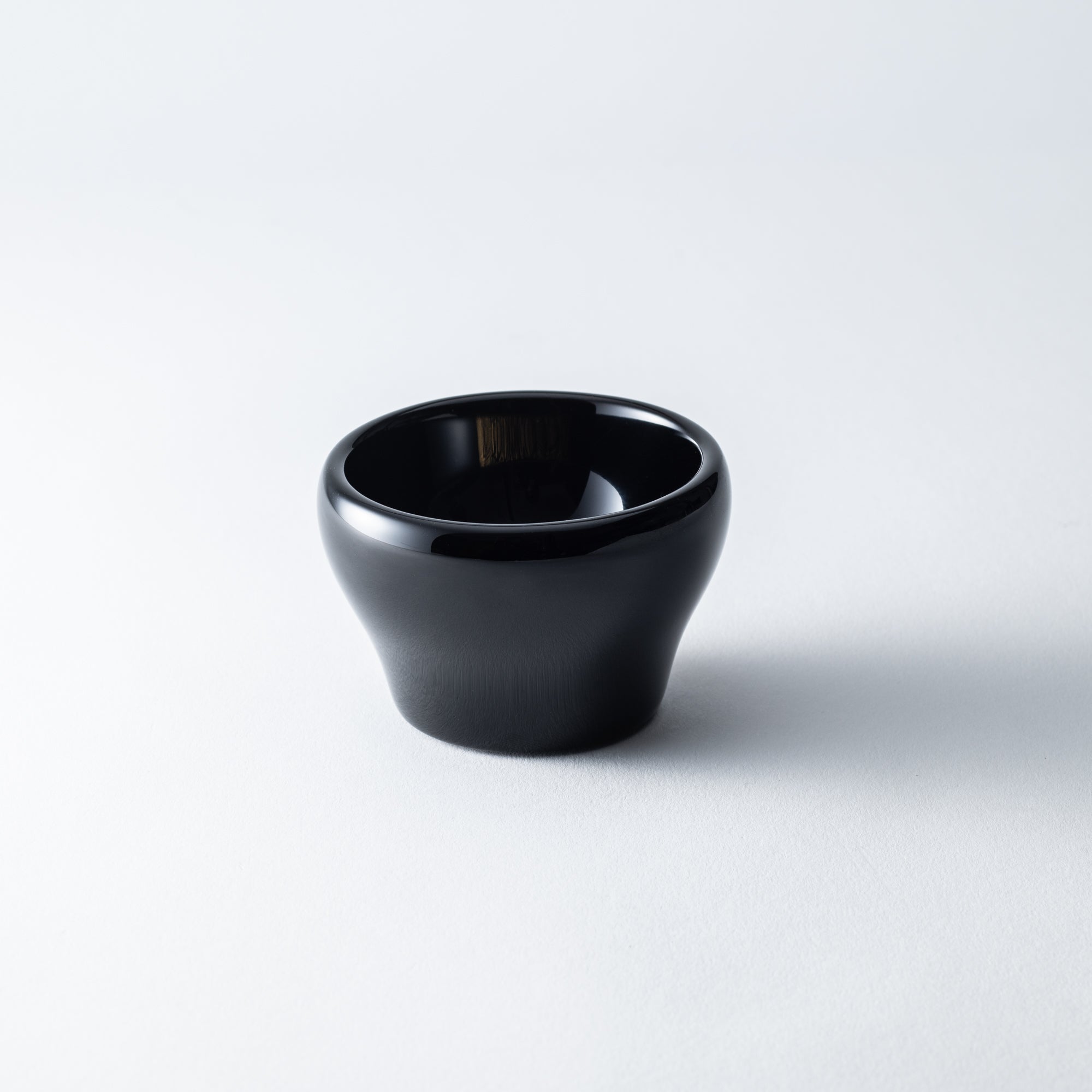
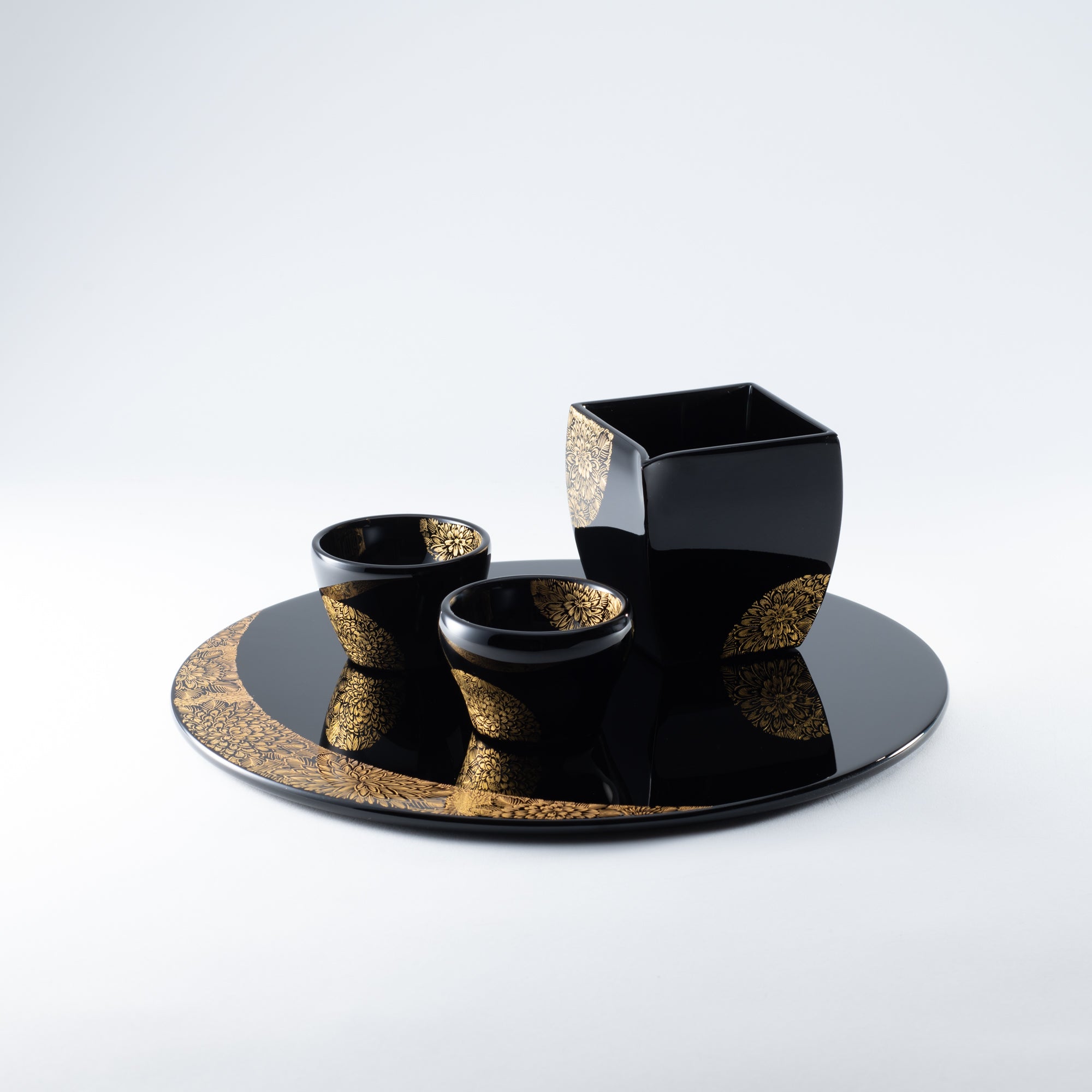
Moon and Chrysanthemum Sake Set
This Wajima lacquerware sake set exemplifies the refined artistry of chinkin, a centuries-old decorative technique. Inspired by the tradition of enjoying sake beneath the autumn moon, this set features chrysanthemums—symbols of longevity and vitality.
Chinkin, the art of engraving lacquerware and inlaying it with gold, graces a mirror-like surface where grand chrysanthemums bloom in radiant splendor under moonlight. Master craftsman Takade Eiji skillfully imparts texture and depth to each design, enhancing the polished Wajima lacquerware with a dynamic brilliance.
This four-piece set comprises a modern, square katakuchi sake carafe, two guinomi sake cups, and a serving tray. The tray features a crescent moon filled with golden blooms, while the cups subtly suggest a full moon, using open space to invite reflection and interplay with their surroundings.
While undeniably stunning, the inherent robustness of Wajima lacquerware and the timeless quality of chinkin ensure it is meant for use, not merely admiration. With each pour and shared moment, the sake set matures, its beauty deepening over time, becoming a treasured companion for years to come.
Seen from a glance, the golden moon glows serenely, but upon drawing nearer, the intricate chrysanthemum design reveals its stunning complexity, crafted with exacting care upon the deep black lacquer. As you enjoy sake, you can feel the elegance of these fine embellishments, your fingertips gliding over the smooth, polished surface, creating a tactile connection with the art itself.
DETAILS
| Quantity | 1 sake carafe, 2 sake cups, and 1 tray |
| Size |
[Katakuchi sake carafe] W 8 cm (3.2 in) x L 8 cm (3.2 in) x H 9 cm (3.5 in) [Sake cups] D 7 cm (2.8 in) x H 5 cm (2 in) [Tray] D 30 cm (11.8 in) x H 0.8 cm (0.3 in) |
| Capacity |
[Katakuchi sake carafe] 230 ml (7.8 oz) [Sake cups] 40 ml (1.4 oz) |
| Material | Wood |
| Package Type | Paper box |
| Microwave | No |
| Dishwasher | No |
Maker / Brand
Upon the pristine surface of Wajima lacquerware, master craftsman Takade Eiji carves a world of gold with the precise strokes of his many chisels. For over fifty years, he has dedicated himself to chinkin, a meticulous craft that embellishes lacquerware with finely carved lines and dots inlaid with gold. This artistry adds a layer of refinement and intricacy. His works reveal a lifetime of skill, patience, and unwavering dedication, yet Takade remains a humble craftsman, focused solely on bringing each piece to its rightful completion.
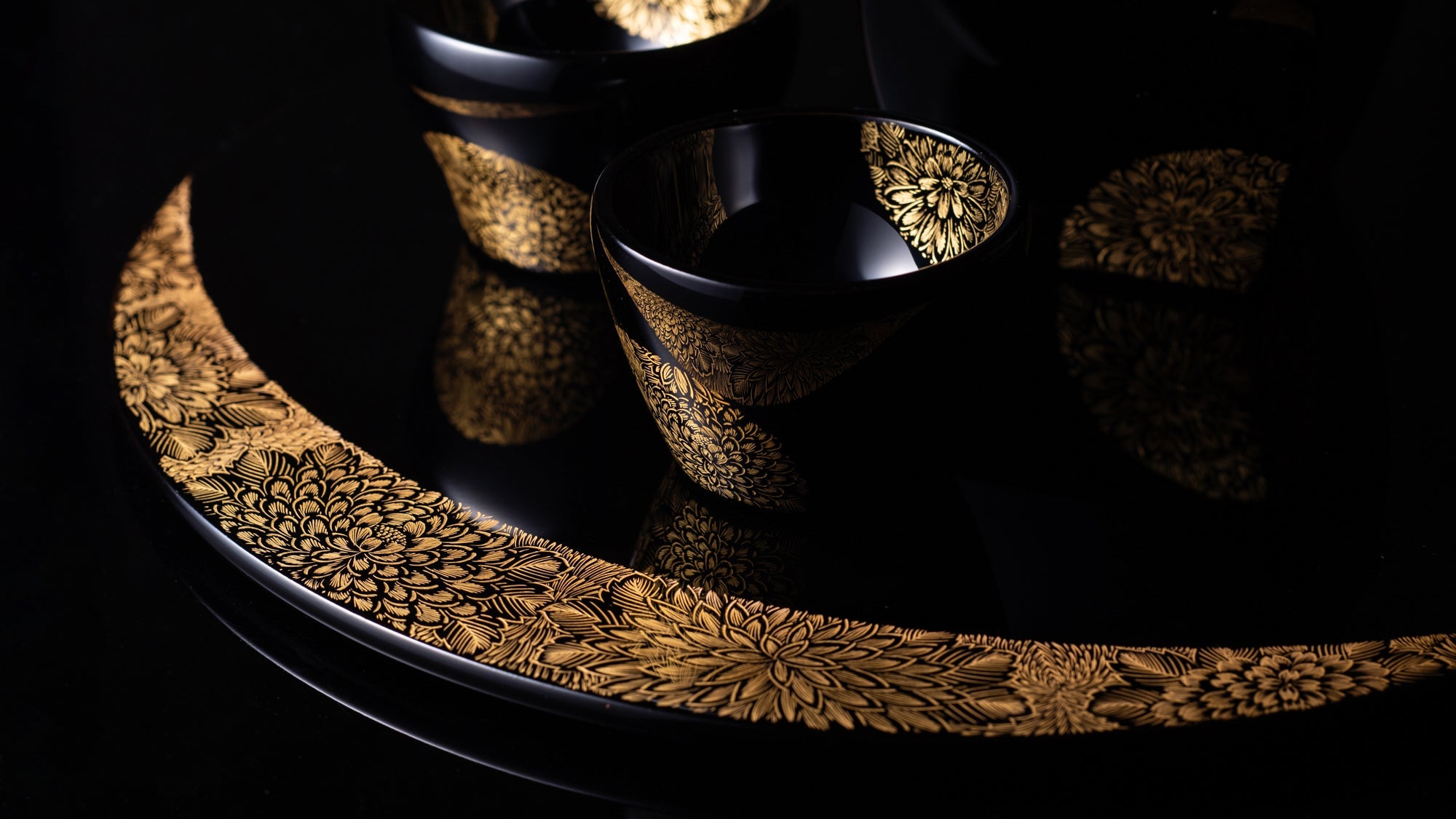
Crafts
Wajima lacquerware, one of Japan's most esteemed lacquerwares, finds its home in Wajima City, nestled in the northwest corner of the Noto Peninsula. This illustrious craft, flourishing since the Edo period (1603 CE–1868 CE), is distinguished by its rich foundation and decorative embellishments that promise both aesthetic and functional excellence.
With an astounding number of steps in its production process, its sumptuous lacquer coat and exquisite decorations draw one into the mesmerizing world of Wajima artistry. Honored as an Important Intangible Cultural Property in 1975, Wajima lacquerware gracefully continues its evolution while maintaining the rich tapestry of its ancient traditions.
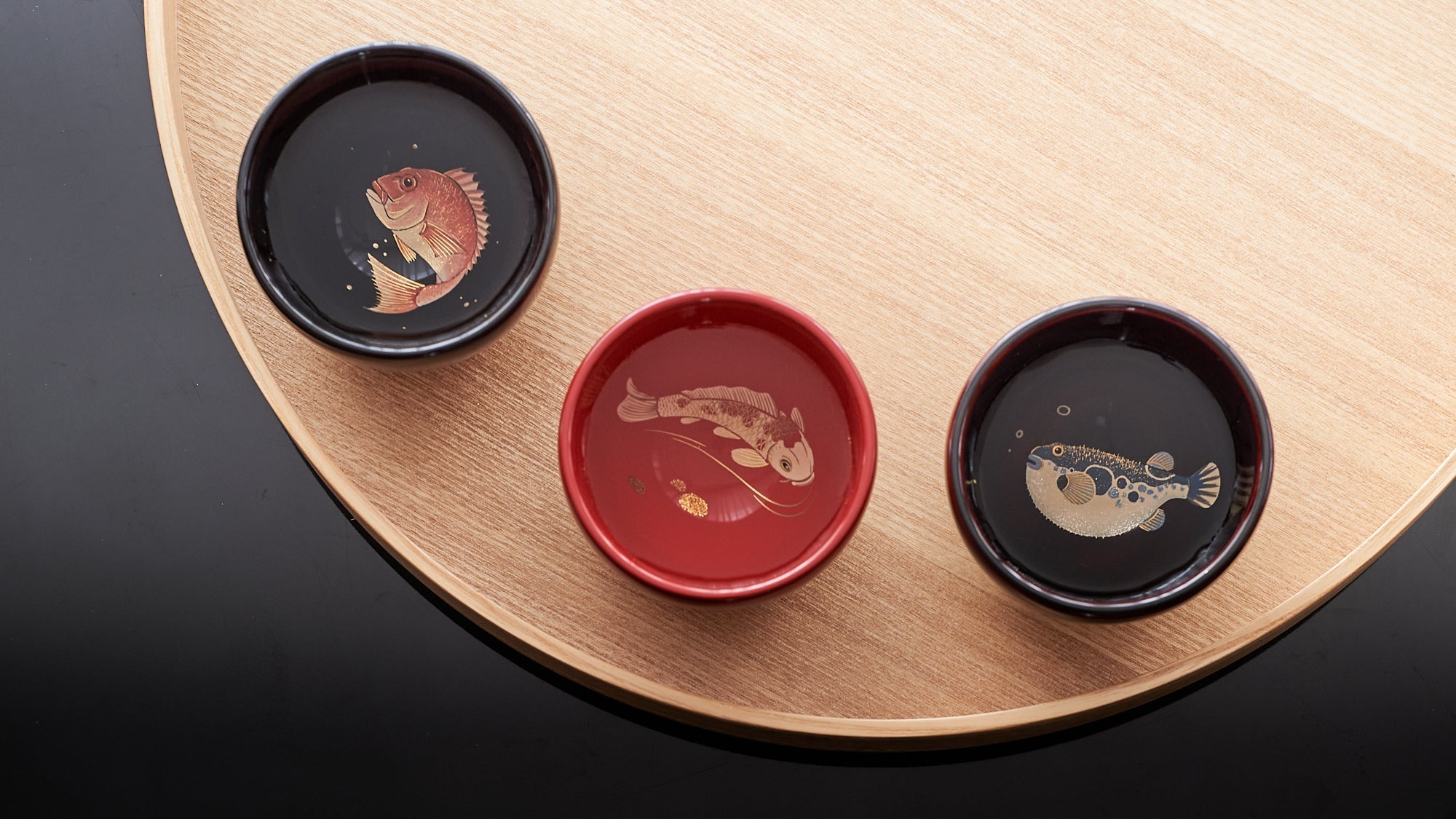
Notes
Choose options
About Artist
Musubi Gallery
Since its inception, MUSUBI KILN has strived to introduce the world to the finest traditional crafts from masters all around Japan.
Here, in the Gallery, we seek to showcase the highest echelon of traditional techniques passed down through generations. You can discover works from masters who have not only perfected those methods, but added their imagination to innovate the craft even further.
Some of these masters have even been named Living National Treasures, a title bestowed upon them by the Japanese government to formally recognize their contribution to crafts and culture — thereby cementing their legacy and making them an important part of art history.
Each piece is meticulously handcrafted over many months to create a timeless treasure that's unlike any other. And when it's in your home, you, too, will become part of that history.
Welcome to the Gallery. Please, peruse at your leisure.
